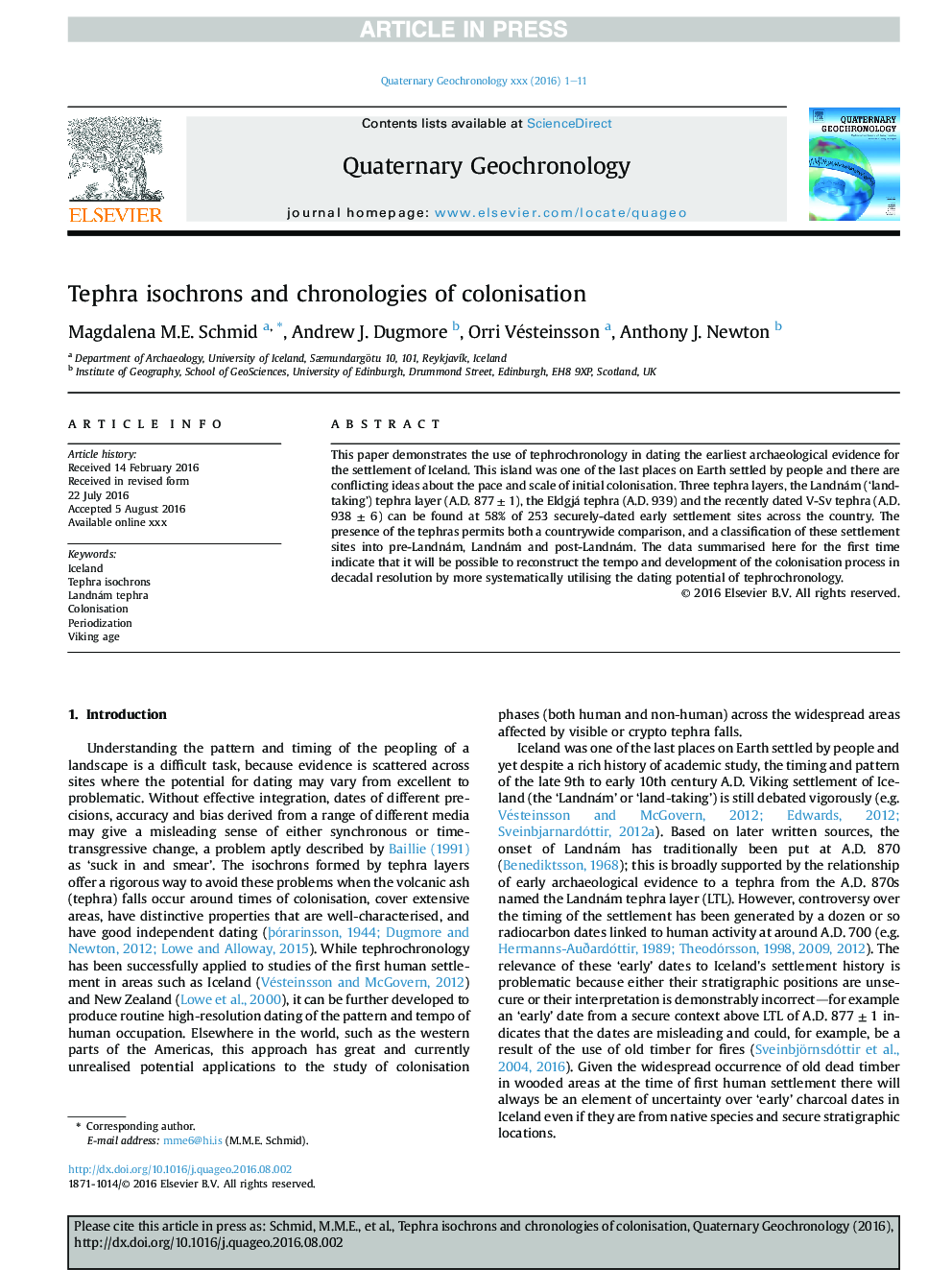| Article ID | Journal | Published Year | Pages | File Type |
|---|---|---|---|---|
| 5784978 | Quaternary Geochronology | 2017 | 11 Pages |
Abstract
This paper demonstrates the use of tephrochronology in dating the earliest archaeological evidence for the settlement of Iceland. This island was one of the last places on Earth settled by people and there are conflicting ideas about the pace and scale of initial colonisation. Three tephra layers, the Landnám ('land-taking') tephra layer (A.D. 877 ± 1), the Eldgjá tephra (A.D. 939) and the recently dated V-Sv tephra (A.D. 938 ± 6) can be found at 58% of 253 securely-dated early settlement sites across the country. The presence of the tephras permits both a countrywide comparison, and a classification of these settlement sites into pre-Landnám, Landnám and post-Landnám. The data summarised here for the first time indicate that it will be possible to reconstruct the tempo and development of the colonisation process in decadal resolution by more systematically utilising the dating potential of tephrochronology.
Related Topics
Physical Sciences and Engineering
Earth and Planetary Sciences
Geochemistry and Petrology
Authors
Magdalena M.E. Schmid, Andrew J. Dugmore, Orri Vésteinsson, Anthony J. Newton,
